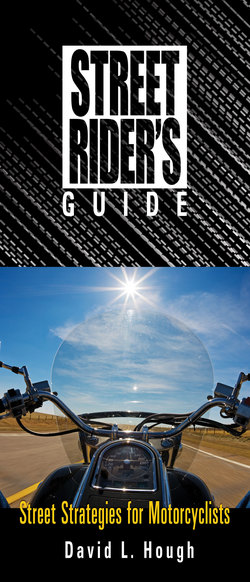Читать книгу Street Rider's Guide - David L. Hough - Страница 8
ОглавлениеBike Traps
One more reason to stay out of the center of the lane.
You’re on your way to a friend’s house. It’s not far, and it’s a warm day, so you decide to forgo your riding gear. For some reason, everyone seems to be creeping along, and when traffic does start to move, every red light catches the truck ahead of you. You’re concerned about your engine overheating and anxious to get moving. You can just see a bit of the signals for the cross street, and, when you see the amber, you prepare to get moving without wasting any time.
But, shortly after the truck begins to move, your front wheel suddenly dives into a slot in the pavement, and the bike comes to a sudden stop, resting on the brake rotors. You’re thrown over the handlebars to tumble across the pavement. It’s a slow-speed crash, but you’re now bleeding and in pain. Apparently, there were some steel plates covering a construction trench, with a narrow gap between the plates. You couldn’t see the plates or the gap because the truck was straddling them. It wasn’t a hazard for other vehicles, but it was a serious hazard for a motorcycle.
It’s important to maintain your awareness of the road surface, as well as monitor traffic and signal lights. It’s not clever to pull up close behind another vehicle at a stop because that limits your view of what might be underneath. It’s also a good idea to stop in one of the wheel tracks rather than in the middle of the lane because the vehicles ahead can be hiding a surface hazard. It’s smarter to favor the left-wheel track of the vehicle ahead and to leave at least one additional bike length to better see hazards such as debris, spilled oil, edge traps, and potholes.
As your hands and arms gradually heal from the “road rash,” you’ll probably be reminding yourself to wear your protective riding gear on every ride—even for a short trip across town.
